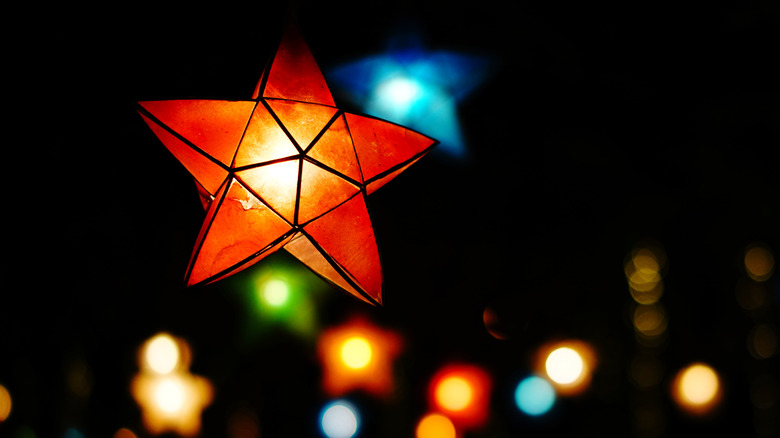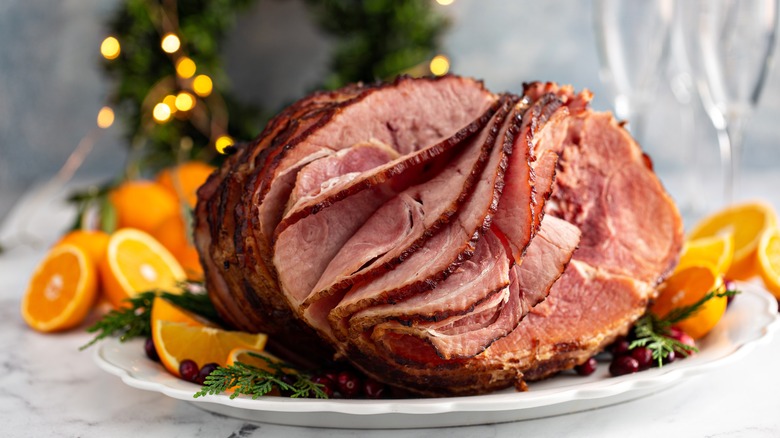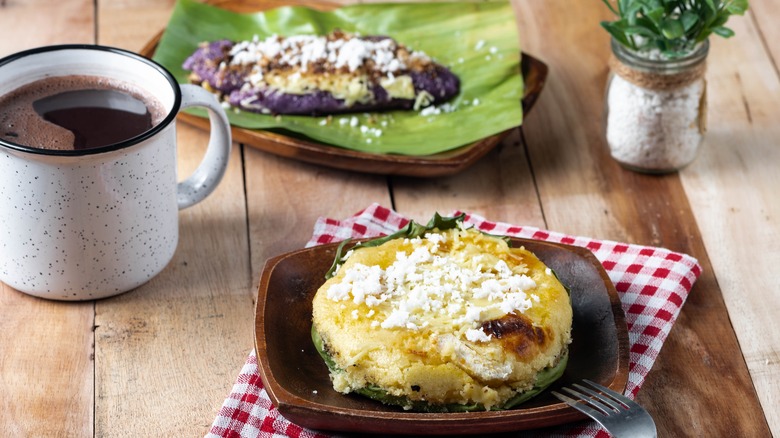In The Philippines Christmas Eve Includes A Late-Night Street Food Feast
Christmas may be celebrated in countless ways around the world, but no culture quite does it like the Philippines — which would be no surprise since Filipinos love the holiday season so much that their celebrations begin in September. The more cynical, including sites like Travel Continuously, might say that the earlier the holiday season, the more money is made in the predominantly Christian country. But there is also the thought that the long warm-up time gives Christmas fans plenty of time to plan the main event, which takes place on Christmas Eve, and is known as Noche Buena. While the term, in Spanish, might be translated as "good night," Noche Buena actually refers to "an evening of goodness," per Asian Food Network.
"Noche Buena" is not unique to the Philippines. This Christmas Eve ritual is also celebrated in countries like Cuba and Mexico, per Oprah Daily, but the culinary traditions that have come to define the Filipino Christmas Eve feast have also been shaped by the country's unique cultural experience, including centuries spent under Spanish rule, decades under American rule, as well as the influence of Chinese and Southeast Asian traders, per Guide to the Philippines.
Traditional foods of Noche Buena
The Noche Buena table is partially influenced by the country's Roman Catholic tradition, per Asian Food Network. In the run-up to Christmas Eve and beginning on December 16 every year, Filipinos get up before sunrise to take part in "Simbang Gabi," or evening mass, which takes place between 3 to 5 in the morning, for eight days before Christmas Eve. Because churchgoers were once required to fast before mass, it became traditional to grab hot Christmas eats from vendors outside after church, which eventually became part of the Noche Buena table.
A number of traditional Noche Buena dishes can be prepared at home, many from recipes that have been handed down for generations. Tatler Asia talks about dishes that include Christmas ham and chicken gallantina — a deboned whole chicken stuffed with a mixture of ground pork, sausages, raisins, and a hardboiled egg. Then there are salads — one made with cream and canned fruit cocktail and another made with macaroni that would give Hawaii's version a run for its money. And then there is ox tripe stew or callos cooked in a rich tomato sauce, as well as the ubiquitous Filipino spaghetti.
Street food is an important part of traditional Noche Buena
But the traditional sweets that find their way onto the Noche Buena table are more likely to be purchased from street vendors fresh outside church. After all, where else would you find mouthwatering slabs of bibingka — the rice cake traditionally cooked in a clay pot over hot coals then topped with a variety of flavors from salted egg and cheese to butter, and young coconut, per Asian Food Network. Then there is puto bumbong, the bright, purple rice cake steamed in bamboo tubes and eaten with brown sugar, butter, and coconut, per Tatler Asia. In her recollections of past Noche Buena celebrations, Filipino food writer Doreen Fernandez also talks about "suman" served with cups of thick, steaming hot chocolate, per Positively Filipino. The glutinous rice cake, which is steamed in banana leaves, per Kawaling Pinoy, and was mainly made at home during Fernandez's time, is also purchased outside.
Another Noche Buena mainstay is "lechon" — a roasted pig that is cooked on a spit over charcoal for hours, so you get a crisp, rich-colored skin, per Cebu Daily News. Many of the best lechons are bought from vendors that made a name by selling their wares by weight at food stalls.


